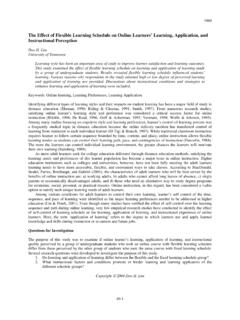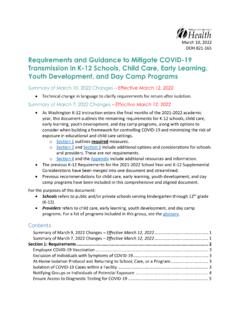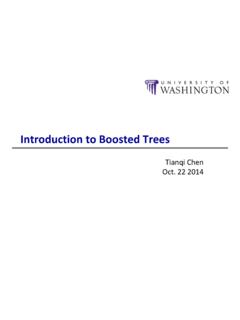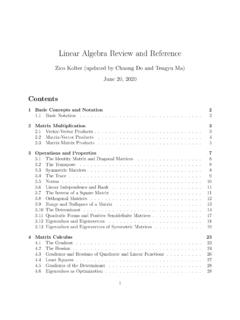Transcription of Mark Scheme (Results) Summer 2016 - Edexcel
1 Mark Scheme (Results) Summer 2016 Pearson Edexcel International GCSE in Physics (4PH0) Paper 1PR Pearson Edexcel International in Science Double Award (4SC0) Paper 1PR Edexcel and BTEC Qualifications Edexcel and BTEC qualifications are awarded by Pearson, the UK s largest awarding body. We provide a wide range of qualifications including academic, vocational, occupational and specific programmes for employers. For further information visit our qualifications websites at or Alternatively, you can get in touch with us using the details on our contact us page at Pearson: helping people progress, everywhere Pearson aspires to be the world s leading learning company.
2 Our aim is to help everyone progress in their lives through education. We believe in every kind of learning , for all kinds of people, wherever they are in the world. We ve been involved in education for over 150 years, and by working across 70 countries, in 100 languages, we have built an international reputation for our commitment to high standards and raising achievement through innovation in education. Find out more about how we can help you and your students at: Summer 2016 Publications Code 4PH0_1PR_1606_MS All the material in this publication is copyright Pearson Education Ltd 2016 General Marking Guidance All candidates must receive the same treatment.
3 Examiners must mark the first candidate in exactly the same way as they mark the last. Mark schemes should be applied positively. Candidates must be rewarded for what they have shown they can do rather than penalised for omissions. Examiners should mark according to the mark Scheme not according to their perception of where the grade boundaries may lie. There is no ceiling on achievement. All marks on the mark Scheme should be used appropriately. All the marks on the mark Scheme are designed to be awarded. Examiners should always award full marks if deserved, if the answer matches the mark Scheme .
4 Examiners should also be prepared to award zero marks if the candidate s response is not worthy of credit according to the mark Scheme . Where some judgement is required, mark schemes will provide the principles by which marks will be awarded and exemplification may be limited. When examiners are in doubt regarding the application of the mark Scheme to a candidate s response, the team leader must be consulted. Crossed out work should be marked UNLESS the candidate has replaced it with an alternative response. Question number Answer Notes Marks 1 (a) all 4 lines;;; any 2 lines;; any one line; (dotted line is given) 3 (b) (i) light dependent resistor / LDR; allow photo sensitive resistor light sensitive resistor allow recognisable spellings 1 (ii) thermistor; allow recognisable spellings 1 total marks = 5 Question number Answer Notes Marks 2 (a) any suitable from: asteroid; meteor(ite).
5 (artificial) satellite; a moon; comet; named planet; dwarf planet Pluto; neutron star; white dwarf; accept appropriate correct answers planets: Mercury Venus Mars 4 any two suitable from: (the) Universe; galaxy; solar system; star / Sun; named planet (1); named planet (2); Sun and star is 1 mark only planets should be gas giants: Jupiter Saturn Uranus Neptune galaxy; (b) (i) gravitational force / gravitational pull / (force of) gravity; 1 (ii) B; 1 (iii) single straight arrow directed towards the Sun; judge by eye 1 (iv) B; 1 total marks = 8 Question number Answer Notes Marks 3 (a) minimum of three straight arrows for different particles (with different lengths).
6 Arrows in different directions; judge by eye arrows need not be attached to particles but it should be clear which particle they refer to 2 (b) any three from: MP1. particles collide/impact/eq; MP2. with sides/walls of container; MP3. idea that force is produced; MP4. idea of pressure as force on an area; allow hit for collide allow particle changes momentum p = F/A 3 (c) idea that pressure increases/eq; 1 (d) Statement Tick ( ) the gas particles get bigger the mass of gas particles stays the same the gas particles move faster the average distance between gas particles increases the temperature of the gas decreases one mark for each correct.
7 If 4 ticks then max mark is 2 if 5 ticks then zero marks 3 total marks = 9 Question number Answer Notes Marks 4 (a) (i) arrows in opposite directions and (roughly) parallel with the length of the spring; allow a line with a double head arrows to R & L ignore arrow length arrows need not be adjacent to the spring judge by eye 1 (ii) any suitable example; sound ultrasound p wave ignore waves in a slinky 1 (b) (i) suitable horizontal line (labelled W); from peak to peak from trough to trough from midpoint to corresponding midpoint between any adjacent points in phase judge by eye but should start and finish at suitable points 1 (ii) (cm) do not allow 5/2 allow 2 1 (iii) substitution into f=1/T; evaluation; unit; f=1/15 Hz no mark for equation as it is given on page 2 -1 for POT error ignore answers given as fractions allow , s-1 condone incorrect truncation , , 3 (iv) (ring oscillates) perpendicular / at right angles}.
8 To the direction the wave travels/eq; allow direction of energy transfer reject 2nd mark if reference to longitudinal wave ring moves parallel to the direction of the wave 2 (v) any suitable example; a named EM wave EM wave s wave allow wave on a rope 1 total marks = 10 Question number Answer Notes Marks 5 (a) (i) geothermal / geothermic; allow nuclear 1 (ii) any suitable resource or method; wind (turbine) hydro-electric waves tidal solar (panels) biofuels/biomass ignore nuclear ignore unqualified water allow photovoltaic cells, (sun)light allow wood 1 (b) any four from: MP1.
9 Thermal energy is transferred from hot rock to cold water OR water heats up; MP2. water molecules gain KE (as they are heated); MP3. steam gains KE as it is heated by the rock; MP4. GPE of steam increases as it gains height; MP5. turbine gains KE from hot water/steam; MP6. generator (coils) transfer KE (from turbine) into electrical energy; MP7. electrical energy is transferred from pump into GPE/KE of water; allow mechanical energy for KE throughout allow heat for thermal energy allow water turned into steam allow turbine transfers KE to electrical energy 4 total marks = 6 Question number Answer Notes Marks 6 (a) (i) pressure difference = g x h accept in words or rearranged form allow d for density do not accept gravity must be g or gravitational field strength 1 (ii) both are curves.
10 Lowest curve travels further than top curve (if extrapolated); 2 (iii) MP1. water at bottom has greater pressure / pressure increases with depth; MP2. (therefore) force on water at the bottom is greatest; allow idea that there is more weight above a point, the lower the point is allow water leaves lower holes with greater speed 2 (b) (i) water level is constant in each vessel; ignore lines drawn in gaps between vessels 1 (ii) any two from: MP1. vessels are connected; MP2.
















